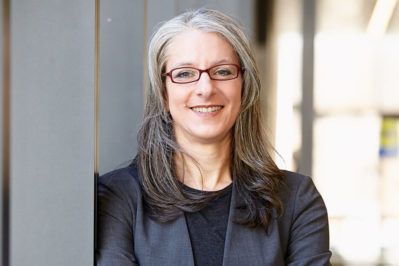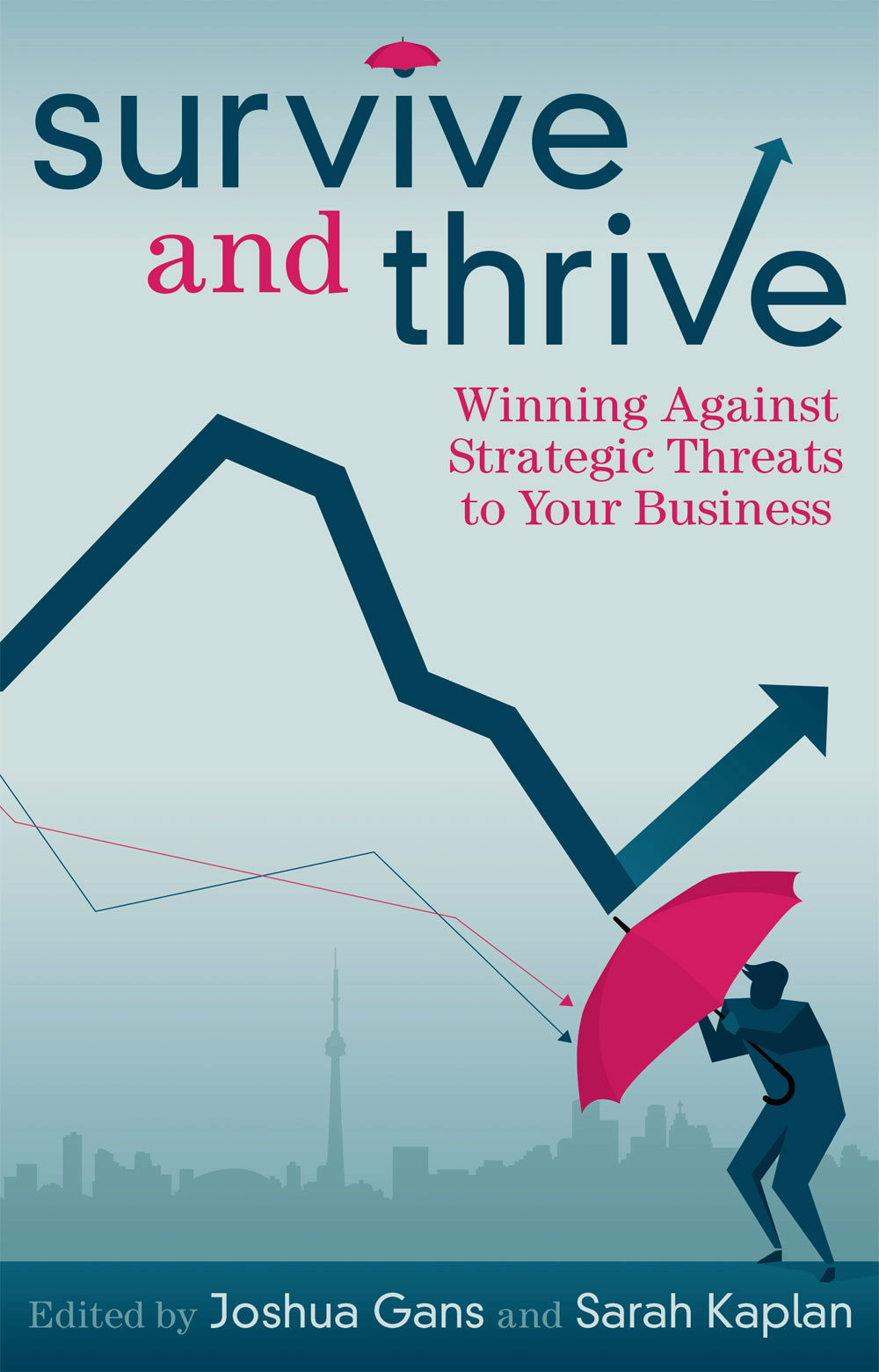It’s widely accepted that diversity makes for stronger teams and organizations, but how can this be achieved in practice? On this episode of Mastering Innovation on Sirius XM Channel 111, Business Radio Powered by The Wharton School, Mack Institute Senior Fellow Sarah Kaplan, Director of the Institute for Gender and the Economy and Distinguished Professor at Rotman School of Management, shares how organizational processes can be tweaked in pursuit of a culture of innovation and diversity.
Large organizations sometimes get “stuck” in their existing business models, cognitive biases, or short-term incentives. Kaplan discussed processes like structured anticipation, which teaches people to anticipate all potential risks. These systems encourage a supportive environment of dissent, where people can openly consider negative threats from which organizations can adapt and grow, rather than be destroyed.
An excerpt of the interview is transcribed below. Listen to more episodes here.
Transcript

Sarah Kaplan: We need to change the conversation on gender equality because the conversation we’ve been having hasn’t been working. That’s where the innovation part comes in. What I’ve come to understand is that if we could think of achieving gender equality, or any kind of equality, as an innovation challenge, we might be able to make more progress.
If you think about all the excitement and energy that organizations put into trying to create innovations, and we could put that same energy, attention, resources, and creativity into solving inequalities, we might actually be able to make progress. I feel like my background, my work on creative destruction, my work on innovation and how organizations can organize to be innovative, can directly apply into this other question. The straight line that I draw through my career goes through innovation.
“If we could think of achieving gender equality, or any kind of equality, as an innovation challenge, we might be able to make more progress.” – Sarah Kaplan
Saikat Chaudhuri: That makes a lot of sense, and we see it all the time. Frankly, even if I take the application of your ideas, we all know that having more diversity in teams, for instance, improves outcomes in innovation, creativity, and all these things. It’s well-established in literature, and clearly, gender plays a big role – gender diversity. We have not achieved nearly the realized impact and potential that we could.
Kaplan: Absolutely. There is a tremendous amount of research that indicates that when you have more diverse teams, you’re likely to get more diverse ideas. In fact, it’s the very diversity that forces teams to have better processes. For example, if you do have people from different backgrounds, it forces you to clarify your ideas. It forces you to be more explicit about your assumptions. All of that, actually, is what leads to greater innovation. Of course, the challenge is that those differences can also lead to conflict and discomfort.
If we’re really going to be able to make progress, it’s not enough to just have “diversity.” We also have to have inclusion. We have to have processes by which you can surface those differences and use them productively. If you don’t put those processes in place, you don’t magically get them just because you have diversity. You have to pay attention to changing how you work in order to get the benefits of diversity.
“You have to pay attention to changing how you work in order to get the benefits of diversity.” – Sarah Kaplan
Chaudhuri: I love that. What a nice idea. How do you help society and organizations through your work, through the institute you founded, to actually achieve that?
Kaplan: One of the things about the conversation that’s been happening for the last decade or so that I think is broken is that the conversation has been a lot about how to help women or how to fix women.
Women aren’t self-confident enough. They need to be more confident. Women don’t negotiate. We need to teach them to negotiate. Women aren’t risk takers. We need to make them risk takers. In fact, what the latest research is showing is that it’s really not an issue of self-confidence or risk-taking or negotiation. It’s much more an issue of the organizational structures and the societal structures in which women operate, whether it’s female entrepreneurs trying to get money out of venture capital, whether it’s women inside organizations. What we have been focused on very much is changing that context, changing organizational processes, changing organizational structures, changing how you do recruiting, changing the wording of your recruiting ads — all sorts of even small interventions that make a big difference to the environment in which women operate.
My hypothesis is that we’re going to make a lot more progress trying to change the structures around which people work more so than trying to “fix women” or alternatively, which many organizations are doing, is all this diversity training and implicit bias training. Basically, all we learn from that training is that we’re biased, and then we feel bad about ourselves because we all are. This is not a “Men are bad, and women are good” type of thing. We’re all biased, and it turns out it’s incredibly hard to make forward movement on changing people’s brains around bias. So, I’m like, “Okay, let’s just accept that people are biased. Let’s build in checks and balances.” We know in hospitals checklists work really well, so maybe we need checklists around diversity. That’s a behavioral economics nudge that could change how people behave, without forcing them to change whether they’re biased or not – because basically, we all are.
Chaudhuri: What are some examples of changes to the environment or processes that we could make in any organization that would help to that effect?
Kaplan: I want to just make a caveat on that “in any organization” part because I think that interventions that are going to work in one organization might not work in another. One of the things we have to recognize is that every organization has its own culture, its own history, its own way of doing business. Every organization’s going to have to think about what is the thing that’s going work for them. Some of the research that we’re doing right now at the Institute that would hint at some possible avenues are things like changing the wording of job ads. A lot of what people have focused on right now is neutralizing: getting rid of more masculine words like “excellence” and “rocket scientists.”
What we’re experimenting within our own research is actually adding feminine traits to job ads. That’s because we have these stereotypes about how men are and how women are. What if we just took advantage of those stereotypes, put them in the job ads, then see who gets attracted to the job and see who gets selected? For example, putting in for a leadership role, “Must be able to multitask. Must be collaborative.” By the way, this is almost every leader. You know this, Saikat. You’re leading an organization. Every leader has to be able to multitask and be collaborative.
We tend not to put those descriptions in job ads because they don’t sound like our stereotypical idea of what a leader is, but it turns out our stereotypical idea what a leader is, is biased, is gendered. We’re experimenting with things like adding those feminine traits into job ads, both to attract more people to apply in particular, for example, in IT or STEM-related fields and also to see if it will change how evaluation committees evaluate candidates so that we can get more women into those roles. It’s a small thing to do, but it’s an example of something that might work. Another thing we’re looking at is changing evaluation scales. You and I, as professors, are very sensitive to this.
When we get our student evaluations, it turns out that different scales, like, whether you go 1-6 or 1-10 can lead to more or less gendered outcomes for evaluations. One of the studies we’re doing is to look into, “Can you manipulate the evaluation scale so that you can get more gender equal outcomes in terms of evaluations?” Many companies do evaluations where there’s at least four boxes on the evaluation form, and maybe we need 5 boxes, or maybe we need 10 boxes. That’s the kind of thing that we’re experimenting with. These are, again, small organizational changes that we think could make a huge difference in how people are being attracted to firms, promoted, and evaluated. Those are some examples of small innovations that could make a real difference.
Chaudhuri: I really like those, and they resonate with me. If we take the first one, it makes a lot of sense in terms of changing the wording. If the point is that we need variety, we need variation, and we need diversity, we don’t want to get rid of that diversity. In fact, what we want to do is embrace it, and take advantage of it. That’s exactly what you’re doing, and that’s a fresh approach. I like it, too.
If you look at the student body, I think they’ll react to these things. We have Sheryl Sandberg’s book on leaning in. That’s one approach, but it may not work for everybody, as powerful as that work or insight may be, so we have to think more broadly about addressing this problem. You’re really embracing some of the basic fundamentals in doing so.
“Let’s not focus on what the individual women can do. Let’s focus on making organizations better.” – Sarah Kaplan
Kaplan: Yes, as much as I admire Sheryl Sandberg and everything that she’s accomplished, I have a real issue with Lean In because it’s, again, a “fix the women” solution, which is, “You women have to lean in. You have to ask.” I do think it’s important for women to take that message to heart, but at the same time, if we don’t change the organizational structures in which women operate, asking isn’t going to help because they’re just going to get pushed back. I think even in later work and in other commentary, Sheryl Sandberg has walked back a little bit and said, “Yeah, I realize now that if you don’t have the right structures, it doesn’t matter how much you lean in.”
What we’re trying to do at the Institute is say, “Let’s not focus on what the individual women can do. Let’s focus on making organizations better, or making venture capital funding processes better, or make innovation accelerators better. All the different ways in which people can participate in the economy, we want to make those better.”
About Our Guest
Sarah Kaplan is the Director of the Institute for Gender and the Economy and a Distinguished Professor at the University of Toronto’s Rotman School of Management. She is the author of the business bestseller Creative Destruction and more recently Survive and Thrive: Winning Against Strategic Threats to Your Business, both of which address the challenges of organizational change.
Formerly a professor at the Wharton School, University of Pennsylvania (where she remains a Senior Fellow), and a consultant and innovation specialist for nearly a decade at McKinsey & Company in New York, Kaplan completed her doctoral research at the Sloan School of Management at the Massachusetts Institute of Technology (MIT). She has a BA with honors in Political Science from UCLA and an MA in International Relations and International Economics from the School for Advanced International Studies, Johns Hopkins University. You can follow her as well as the Institute for Gender and the Economy on Twitter: @sarah_kaplan, @GenderEconomy.
Mastering Innovation is live on Thursdays at 4:00 p.m. ET. Listen to more episodes here.





